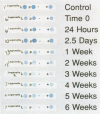Abstract
Legionella spp. are ubiquitous in most environmental water sources; however, sewage treatment plants have not been examined as potential environmental reservoirs for these bacteria. This study used polymerase chain reaction, direct fluorescent-antibody staining, and culture methods to examine raw and treated sewage, ocean-receiving waters, and nearshore coastal environments for the presence of Legionella pneumophila and other Legionella spp. The study concluded that Legionella spp. are present in all phases of sewage treatment and that population numbers do not significantly decline through the treatment process. Ocean-receiving waters located 5 miles offshore, where the treated sewage is discharged, were found to contain Legionella spp., but ocean water between the discharge site and coastal bathing beaches was negative. This suggests that the Legionella spp. from the ocean discharge site were not reaching the nearshore beach waters. A flood control channel and river that entered the ocean were found to contain Legionella spp., and a nearby beach swimming area was also found to be positive, suggesting that land runoff from the flood control channel and river were the source of the Legionella spp. in the beach water samples that tested positive.
Full text
PDF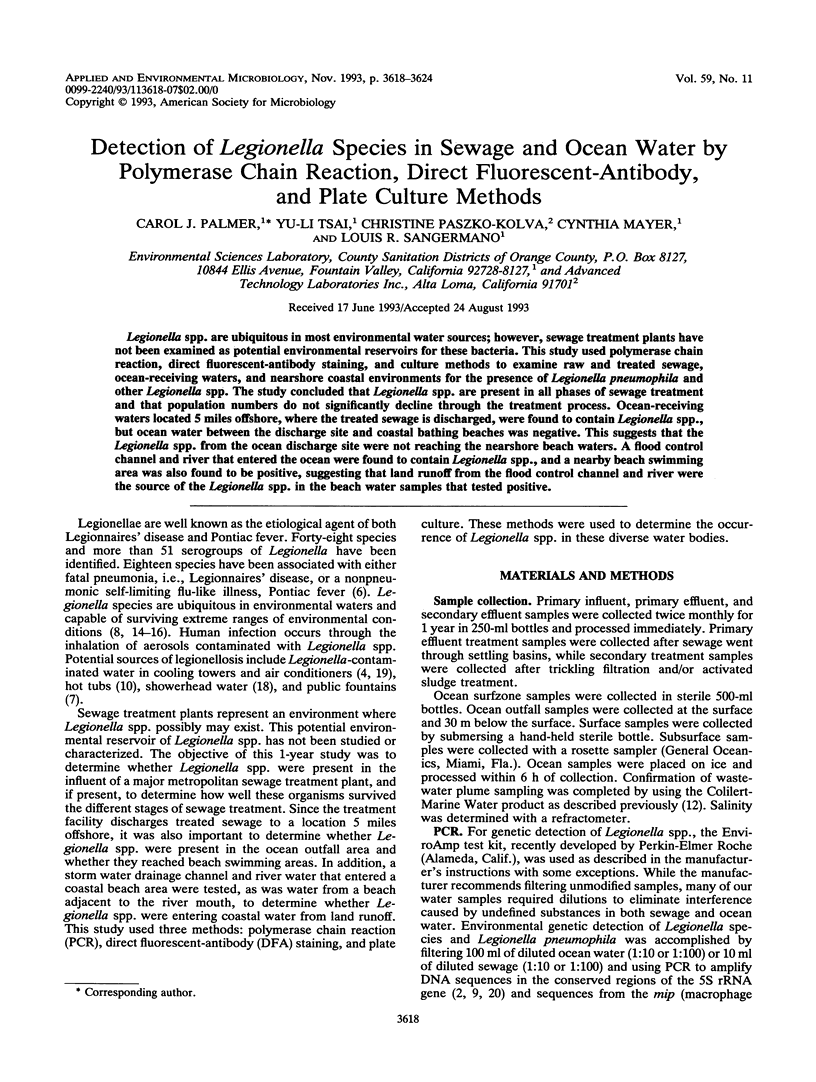
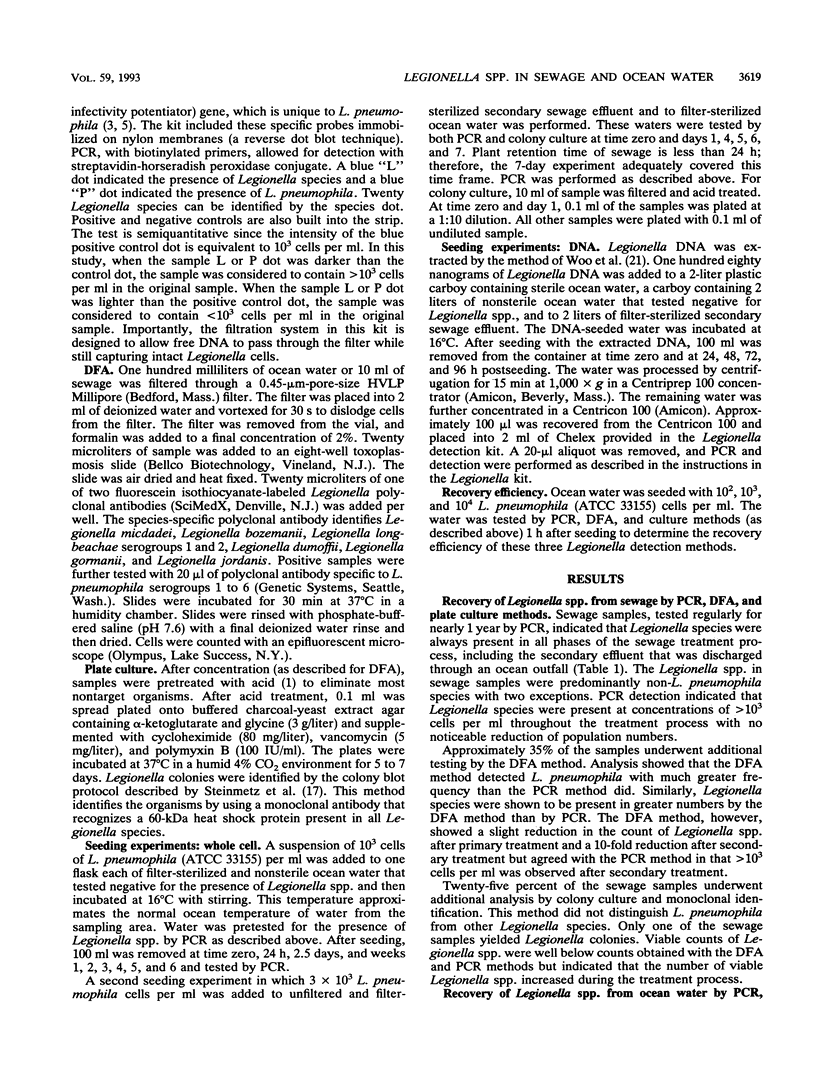
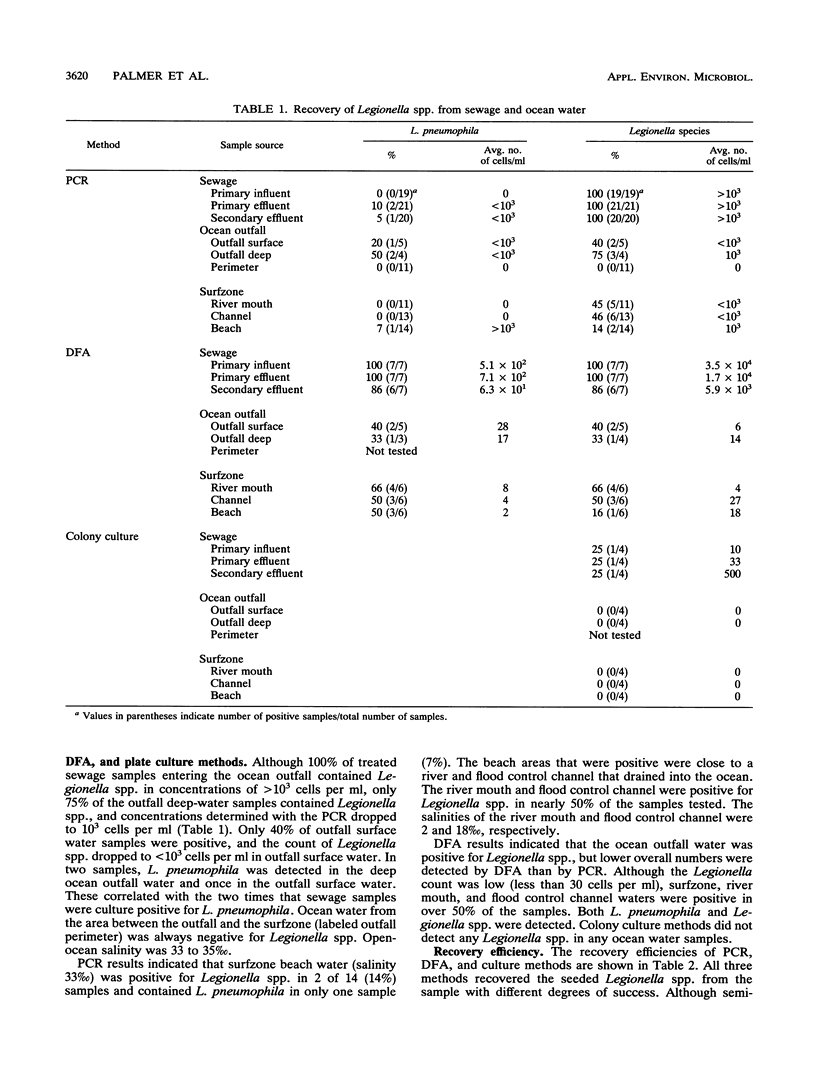
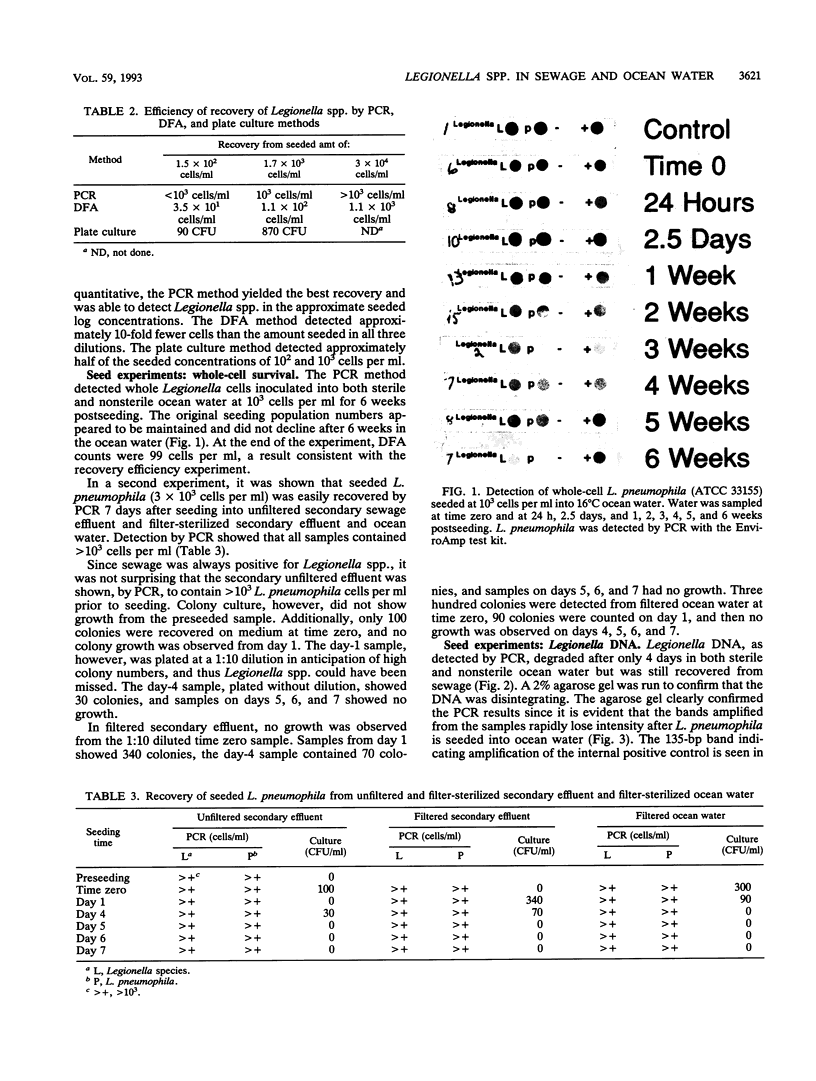
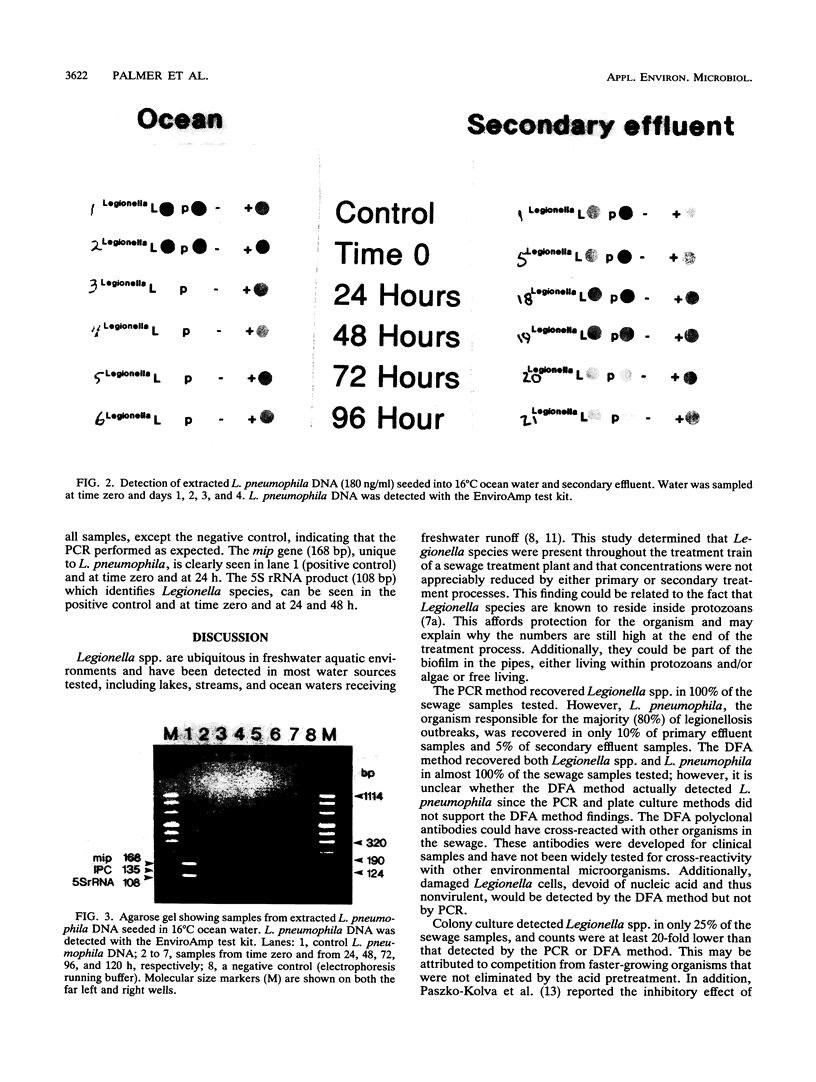
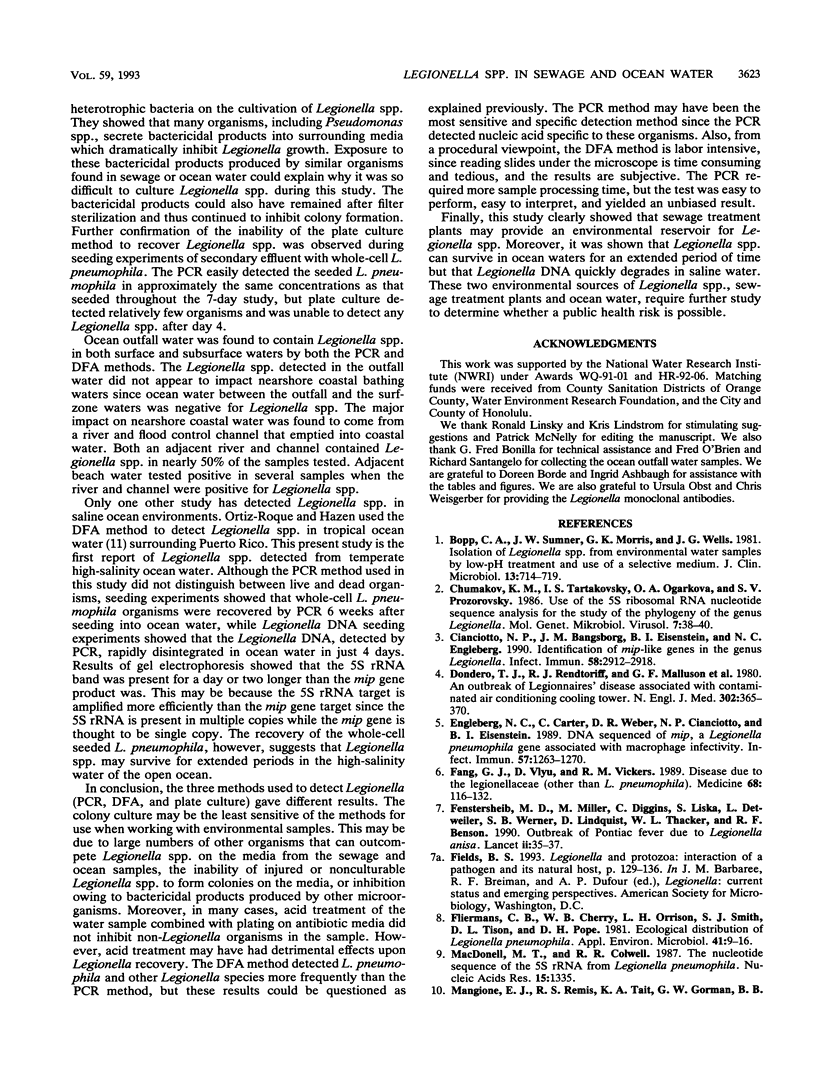
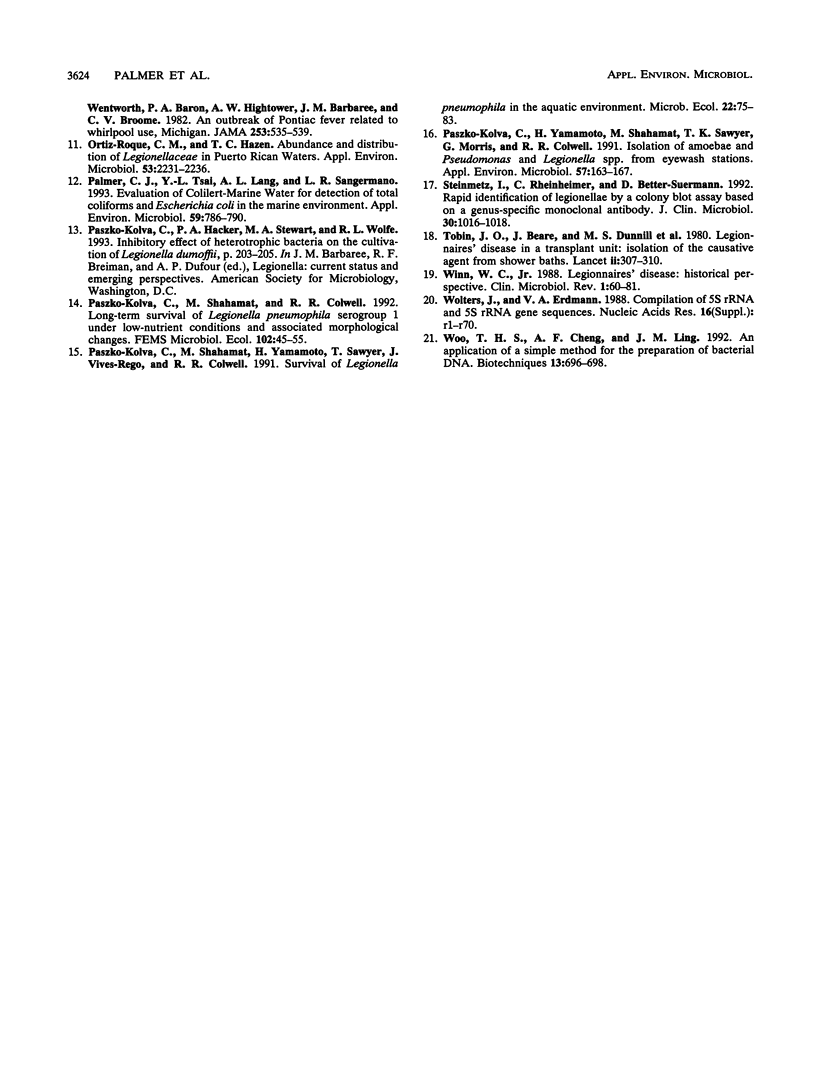
Images in this article
Selected References
These references are in PubMed. This may not be the complete list of references from this article.
- Bopp C. A., Sumner J. W., Morris G. K., Wells J. G. Isolation of Legionella spp. from environmental water samples by low-pH treatment and use of a selective medium. J Clin Microbiol. 1981 Apr;13(4):714–719. doi: 10.1128/jcm.13.4.714-719.1981. [DOI] [PMC free article] [PubMed] [Google Scholar]
- Chumakov K. M., Tartakovskii I. S., Ogarkova O. A., Prozorovskii S. V. Izuchenie filogenii bakterii roda Legionella putem opredeleniia posledovatel'nosti nukleotidov 5S ribosomnoi RNK. Mol Gen Mikrobiol Virusol. 1986 Aug;(8):38–40. [PubMed] [Google Scholar]
- Cianciotto N. P., Bangsborg J. M., Eisenstein B. I., Engleberg N. C. Identification of mip-like genes in the genus Legionella. Infect Immun. 1990 Sep;58(9):2912–2918. doi: 10.1128/iai.58.9.2912-2918.1990. [DOI] [PMC free article] [PubMed] [Google Scholar]
- Dondero T. J., Jr, Rendtorff R. C., Mallison G. F., Weeks R. M., Levy J. S., Wong E. W., Schaffner W. An outbreak of Legionnaires' disease associated with a contaminated air-conditioning cooling tower. N Engl J Med. 1980 Feb 14;302(7):365–370. doi: 10.1056/NEJM198002143020703. [DOI] [PubMed] [Google Scholar]
- Engleberg N. C., Carter C., Weber D. R., Cianciotto N. P., Eisenstein B. I. DNA sequence of mip, a Legionella pneumophila gene associated with macrophage infectivity. Infect Immun. 1989 Apr;57(4):1263–1270. doi: 10.1128/iai.57.4.1263-1270.1989. [DOI] [PMC free article] [PubMed] [Google Scholar]
- Fang G. D., Yu V. L., Vickers R. M. Disease due to the Legionellaceae (other than Legionella pneumophila). Historical, microbiological, clinical, and epidemiological review. Medicine (Baltimore) 1989 Mar;68(2):116–132. doi: 10.1097/00005792-198903000-00005. [DOI] [PubMed] [Google Scholar]
- Fenstersheib M. D., Miller M., Diggins C., Liska S., Detwiler L., Werner S. B., Lindquist D., Thacker W. L., Benson R. F. Outbreak of Pontiac fever due to Legionella anisa. Lancet. 1990 Jul 7;336(8706):35–37. doi: 10.1016/0140-6736(90)91532-f. [DOI] [PubMed] [Google Scholar]
- Fliermans C. B., Cherry W. B., Orrison L. H., Smith S. J., Tison D. L., Pope D. H. Ecological distribution of Legionella pneumophila. Appl Environ Microbiol. 1981 Jan;41(1):9–16. doi: 10.1128/aem.41.1.9-16.1981. [DOI] [PMC free article] [PubMed] [Google Scholar]
- MacDonell M. T., Colwell R. R. The nucleotide sequence of the 5S rRNA from Legionella pneumophila. Nucleic Acids Res. 1987 Feb 11;15(3):1335–1335. doi: 10.1093/nar/15.3.1335. [DOI] [PMC free article] [PubMed] [Google Scholar]
- Mangione E. J., Remis R. S., Tait K. A., McGee H. B., Gorman G. W., Wentworth B. B., Baron P. A., Hightower A. W., Barbaree J. M., Broome C. V. An outbreak of Pontiac fever related to whirlpool use, Michigan 1982. JAMA. 1985 Jan 25;253(4):535–539. [PubMed] [Google Scholar]
- Palmer C. J., Tsai Y. L., Lang A. L., Sangermano L. R. Evaluation of colilert-marine water for detection of total coliforms and Escherichia coli in the marine environment. Appl Environ Microbiol. 1993 Mar;59(3):786–790. doi: 10.1128/aem.59.3.786-790.1993. [DOI] [PMC free article] [PubMed] [Google Scholar]
- Paszko-Kolva C., Yamamoto H., Shahamat M., Sawyer T. K., Morris G., Colwell R. R. Isolation of amoebae and Pseudomonas and Legionella spp. from eyewash stations. Appl Environ Microbiol. 1991 Jan;57(1):163–167. doi: 10.1128/aem.57.1.163-167.1991. [DOI] [PMC free article] [PubMed] [Google Scholar]
- Steinmetz I., Rheinheimer C., Bitter-Suermann D. Rapid identification of legionellae by a colony blot assay based on a genus-specific monoclonal antibody. J Clin Microbiol. 1992 Apr;30(4):1016–1018. doi: 10.1128/jcm.30.4.1016-1018.1992. [DOI] [PMC free article] [PubMed] [Google Scholar]
- Vives-Corrons J. L., Jou J. M., Pastor C., Reverter J. C., Jou C. Characteristics of the external quality assessment (EQA) scheme for haematology in Spain. Qual Assur Health Care. 1991;3(2):75–83. doi: 10.1093/intqhc/3.2.75. [DOI] [PubMed] [Google Scholar]
- Winn W. C., Jr Legionnaires disease: historical perspective. Clin Microbiol Rev. 1988 Jan;1(1):60–81. doi: 10.1128/cmr.1.1.60. [DOI] [PMC free article] [PubMed] [Google Scholar]
- Wolters J., Erdmann V. A. Compilation of 5S rRNA and 5S rRNA gene sequences. Nucleic Acids Res. 1988;16 (Suppl):r1–70. doi: 10.1093/nar/16.suppl.r1. [DOI] [PMC free article] [PubMed] [Google Scholar]
- Woo T. H., Cheng A. F., Ling J. M. An application of a simple method for the preparation of bacterial DNA. Biotechniques. 1992 Nov;13(5):696–698. [PubMed] [Google Scholar]



